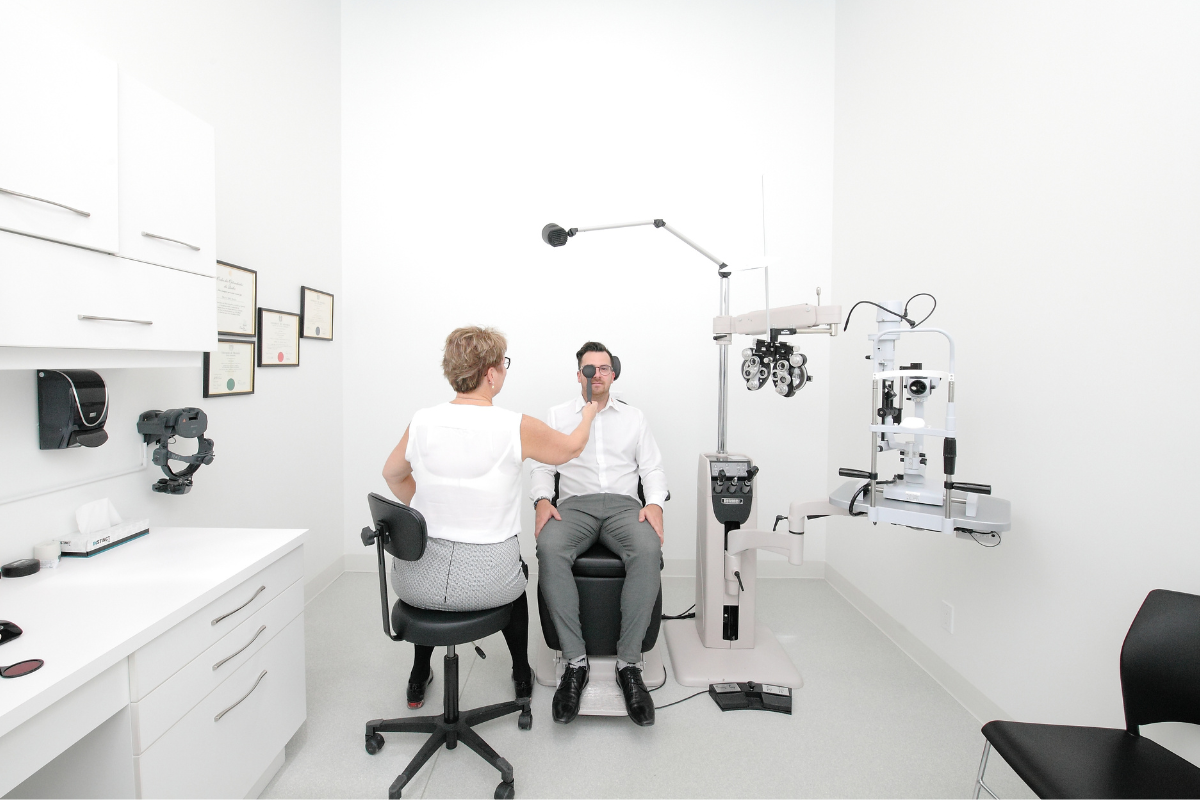Advice
8 March 2023
Advice
8 March 2023

Let’s go back in time a few years. It’s 1996, and you’re at your optometrist for an eye exam. You made your appointment using your landline because the Internet didn’t exist yet. You even found your optometrist in the Yellow Pages. You have an appointment for an eye exam because you think you need glasses. Your optometrist examines the structure of your eyes using different lenses and a biomicroscope. But that’s where their job ends. More than a quarter-century later, computers, sophisticated imaging technology, and optometry services have come a long way.
These days, you make your appointment on the Eye Am website, which lets you select the reason for your visit and choose your optometrist, who will do a comprehensive eye health exam. Using a retinal scan, they can look for lesions in your eyes that point to the early signs of macular degeneration or glaucoma. Your optometrist can then use this precise electronic data to adjust your glasses and contact lenses to the perfect strength. Using a precise image of the meibomian glands, they can make an early diagnosis of meibomian gland dysfunction, the condition responsible for 85% of cases of chronic dry eye.
They can also study your retina by taking pictures of the back of your eye, which lets them make an early diagnosis of diabetic or hypertensive retinopathy. Using another high-tech instrument, they can generate a detailed, three-dimensional image of the surface of your cornea. This lets your optometrist detect any possible abnormalities, such as keratoconus, and monitor the condition closely.
During your eye exam, you’ll notice that this service has changed substantially to become a full portrait of your eye health. Which is reassuring, because your optometrist will be able to tell you if you’re at risk for an eye disease. And if that’s the case, you’ll be taken care of quickly. More than ever, the focus of modern optometry has shifted to prevention through more comprehensive eye exams. And because your optometrist has extensive experience, they need only refer complex or surgical cases to an ophthalmologist. Back in 1996, an eye disease meant an immediate referral to an ophthalmologist.
So, you got a quick diagnosis. You suffer from dry eyes due to too much screen time at work and at home. Your meibomian glands are no longer able to keep your eyes moist. Like 85% of patients, you’ll need treatment at the clinic. Your optometrist will clear your meibomian glands and liquefy the built-up secretions with heat using iLux or LipiFlow technologies. You may also need to apply lubricating drops.
During your visit to Eye Am, you’ll understand that for us, eye health starts with prevention and screening for eye diseases in order to avoid symptoms and treat them when needed. Our technology investments translate to small wins. Each condition identified and treated before it leads to vision loss is cause for celebration in our eyes! So, if you value your eye health, you’ll want to keep a close eye on our optometrists.
Now, pull out your smartphone and do what you couldn’t do 25 years ago: make an appointment in the blink of an eye!
Articles that might interest you
Introducing the first-ever smart sports glasses designed for performance